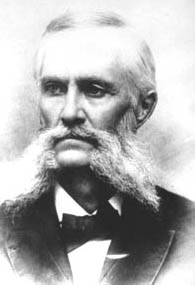Vol. 17 No. 3
March, 1987
|
Stay Safe in 87
|
|

Route Change
Controversial
to This Day
|

Dave Jones
Corporate
Archives
|
The decision to change the route of the Canadian Pacific Railway from the northern
course mapped out by Sandford Fleming to the more direct line through the Kicking Horse Pass remains controversial
to this day.
| |

A.B. Rogers
|
While the more direct route affords a measure of speed over the competition, the Rogers Pass Project is only the
latest in a series of costly improvements which have been necessary to maintain the edge the route has provided.
For better or worse, the die was cast when Major A.B. Rogers announced the discovery of the pass which bears his
name in August, 1882.
Born in Orleans, Mass., in 1829, Major Rogers came to Canada at the request of CPR syndicate member James J. Hill.
In addition to an education as an apprentice ship's carpenter and an engineering degree from Yale, Rogers had an
excellent background from his work as an engineer on the Erie Canal, as well as his experience in the same capacity
with several railroads in the United States, culminating with the Chicago, Milwaukee and St. Paul.
Serving with the U.S. Cavalry during the Civil War, he received his commission as a major in 1862.
Hill's purpose in sending Rogers west in 1881 was to examine the more southerly passes through the Rocky Mountains,
and to search for a feasible rail route through the Selkirk Mountains.
At the end of his first season in the mountains, where he was aided in his survey by his nephew Albert and a party
of 10 Indians recruited at Kamloops, he joined General Manager William Van Horne in announcing the practicability of
a route through the Kicking Horse Pass - even though he was not absolutely sure a corresponding pass existed in the
Selkirks.
Of course, Rogers confirmed the existence of the now-famous pass in 1882 and the railway's destiny was
sealed.
But the cost of keeping the route open has been high, both in dollars and labor.
Many kilometres of snow sheds have been built and enormous tunnels excavated. The bridges along the line are some of
the most impressive engineering features on the system, while the motive power required to move the trains over the
pass are the most powerful. The snowfall in Roger's Pass is measured in hundreds of centimetres, and the war against
snowslides and avalanches is a never-ending battle.
Yet the southern route has yielded many benefits as well, not least of which was enabling the railway to speed
freight to the Pacific in sufficient time to secure the mail contract from the British government, at a time when
such contracts meant the difference between success or failure of the entire enterprise.
The line is fortunate in running through some of the best farming, ranching, and mining country in the country,
while the scenic attractions are among the world's finest.
Clearly, the original directors of the company were pleased with "Hell's Bells" Rogers, as he was awarded
a cheque for $5,000 and a gold watch for his discovery of the pass.
Certainly the "short, sharp, snappy little chap with long Dundreary whiskers" was one of the most
colourful characters in the company's history.
Although honest and hard working, Rogers was known for his eccentricities. J.H.E. Secretan, an English engineer who
worked closely with Rogers, described him as "a master of picturesque profanity, who continually chewed
tobacco and was an artist in expectoration."
Sadly, Rogers fell ill with cancer in 1889, and, while in his own words "awaiting the muffled oar", died
in the month of May. His legacy lives on.
This CP Rail News article is copyright
1987 by the Canadian Pacific Railway and is reprinted here with their
permission. All photographs, logos, and trademarks are the property of the Canadian Pacific Railway
Company.
|